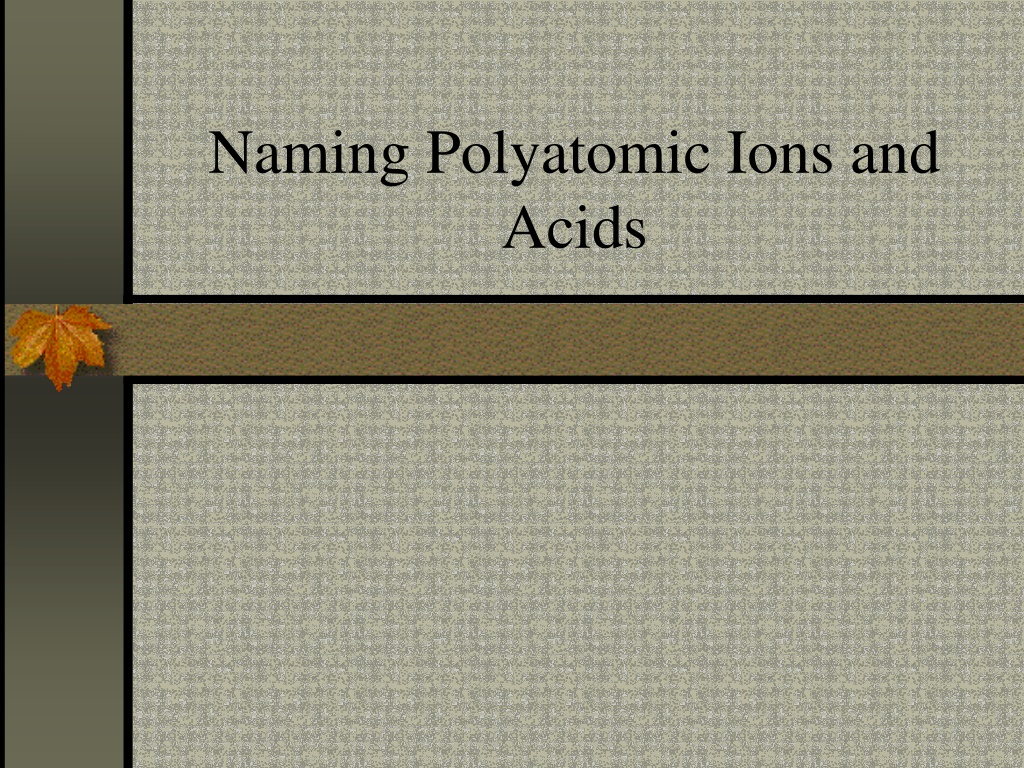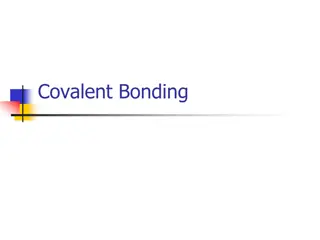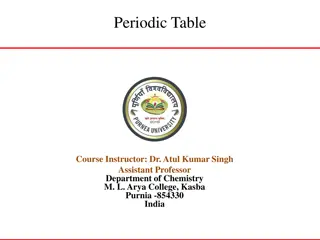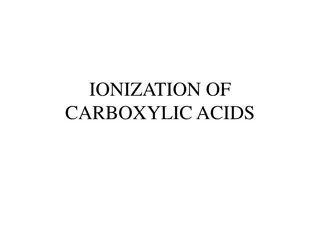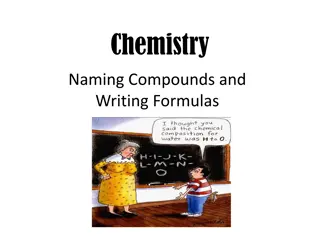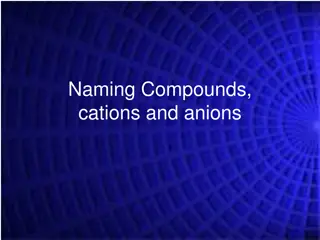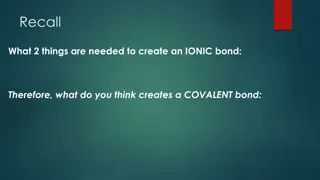Understanding Naming of Polyatomic Ions, Acids, and Covalent Compounds
Exploring the nomenclature of polyatomic ions, oxyanions, acids, and covalent compounds. Learn how to name compounds based on their composition, whether they contain oxygen, and the type of bond they form.
Download Presentation

Please find below an Image/Link to download the presentation.
The content on the website is provided AS IS for your information and personal use only. It may not be sold, licensed, or shared on other websites without obtaining consent from the author. Download presentation by click this link. If you encounter any issues during the download, it is possible that the publisher has removed the file from their server.
E N D
Presentation Transcript
Oxyanions Oxyanions- negative ions containing oxygen. These have the suffix -ate or -ite -ate means it has more oxygen atoms bonded, -ite has less For example SO42-sulfate SO32-sulfite
Oxyanions Oxyanions may contain the prefix hypo- , less than, or per- , more than. For example ClO4- Perchlorate ClO3- Chlorate ClO2- Chlorite ClO- Hypochlorite
Acids Certain compounds produce H+ions in water, these are called acids. You can recognize them because the neutral compound starts with H . For example HCl, H2SO4, and HNO3. Don t confuse a polyatomic ion with a neutral compound. HCO3-is hydrogen carbonate, not an acid.
Naming acids Does it contain oxygen? If it does not, it gets the prefix hydro- and the suffix -ic acid HCl Hydrochloric acid HF Hydrofluoric acid HCN Hydrocyanic acid
Naming Acids If it does contain an oxyanion, then replace the ending. If the ending was ate , add -ic acid If the ending was ite , add -ous acid H2SO4Sulfuric Acid H2SO3Sulfurous Acid
Examples HNO3 HI H3AsO4 HClO2
Nomenclature (naming) of Covalent compounds
Determining the type of bond First, determine if you have an ionic compound or a covalent compound. A metal and a nonmetal will form an ionic bond. Compounds with Polyatomic ions form ionic bonds. Nonmetals bonding together or Nonmetals and a metalloid form covalent bonds.
Covalent bonding is very similar to ionic naming You always name the one that is least electronegative first (furthest from fluorine) Most electronegative last, and gets the suffix -ide .
Covalent bonding is very different from ionic naming Ionic names ignored the subscript because there was only one possible ratio of elements. Covalent gives several possibilities so we have to indicate how many of each atom is present in the name
Prefixes you have to know prefix meaning prefix meaning *mono- 1 hex- 6 di- 2 hept- 7 tri- 3 oct- 8 tetr- 4 non- 9 pent- 5 dec- 10 * the first atom named does not get the prefix mono- , it just keeps its original name!
Examples CO carbon monoxide CO2 carbon dioxide NI3 nitrogen triiodide P4O6 tetraphosphorus hexoxide
Continuing I4O9 tetriodine nonoxide S2F10 disulfur decafluoride IF7 Iodine heptafluoride Si2Cl6 disilicon hexachloride
Something to be wary of Many chemicals have common names because they have been in use for so long like H2O2 following naming rules it is dihydrogen dioxide commonly it is hydrogen peroxide.
Homework HW -go to http://www.DHMO.org and write a 2 paragraph reaction to the site citing actual information presented in the site. Not just an angry rant, but an intelligent opinion. Pay attention to what you just learned! Due by next Wednesday
